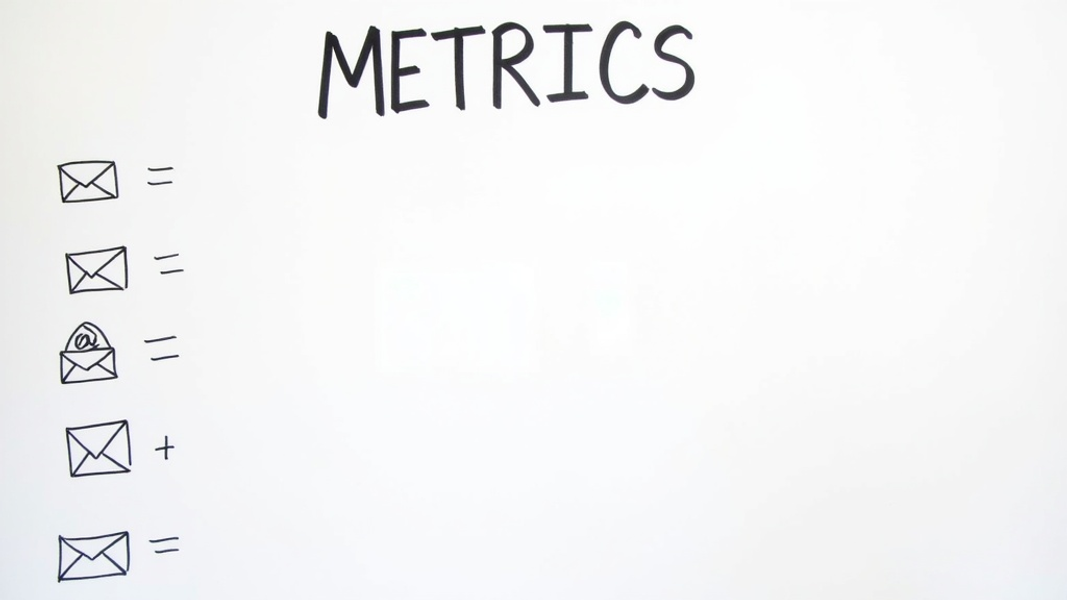
Did you know that email marketing generates $36 for every $1 spent, making it one of the most effective marketing channels available? This guide will help you understand email marketing, its benefits, and how to create successful campaigns that drive results for your business.
What is Email Marketing?
Email marketing is a digital strategy that uses email to promote products, services, or brand messages to a list of subscribers. It's a direct way to reach customers in their inbox, building relationships and driving sales.
The roots of email marketing go back to 1978 when Gary Thuerk sent the first mass email to promote Digital Equipment Corporation's computers. This early attempt brought in $13 million in sales, showing the power of email as a marketing tool.
Types of Email Marketing Campaigns
Email marketing comes in many forms. Some common types include:
- Newsletters: Regular updates about your company, products, or industry news.
- Promotional emails: Messages about sales, discounts, or new product launches.
- Welcome emails: First messages sent to new subscribers.
- Abandoned cart reminders: Emails sent to customers who left items in their online shopping cart.
- Re-engagement campaigns: Emails aimed at winning back inactive subscribers.
Each type serves a specific purpose in your overall marketing strategy. By using a mix of these email types, you can keep your audience engaged and drive more sales.
Benefits of Email Marketing
Email marketing offers several key advantages that make it a must-have in your marketing toolkit.
Cost-Effective with High ROI
One of the biggest benefits of email marketing is its low cost and high return on investment (ROI). Unlike paid advertising, which can eat up a big chunk of your marketing budget, email marketing lets you reach a large audience at a fraction of the cost.
With the right strategy, you can see significant returns from your email campaigns. This makes it an ideal choice for small businesses and startups working with tight budgets.
Direct Access to Your Audience
Email provides a direct line to your customers' inboxes. Unlike social media posts that might get lost in a busy feed, emails land right in front of your audience. This direct access means you have more control over when and how your message reaches your customers.
Personalization and Targeting
Modern email marketing tools allow for deep personalization. You can segment your email list based on factors like past purchases, browsing behavior, or demographics. This lets you send highly targeted messages that resonate with each group of subscribers.
For example, you might send different product recommendations to customers based on their past purchases. This level of personalization can significantly boost engagement and conversion rates.
Measurable Results
Email marketing provides clear, measurable results. You can track metrics like open rates, click-through rates, and conversion rates for each campaign. This data helps you understand what's working and what's not, allowing you to refine your strategy over time.

How Email Marketing Works
To start with email marketing, you need three key elements: an email list, an email service provider, and a clear strategy.
Building an Email List
Your email list is the foundation of your email marketing efforts. It's a collection of email addresses from people who have given you permission to send them messages. Building a quality list takes time, but it's worth the effort.
To grow your list, you can:
- Add sign-up forms to your website
- Offer a lead magnet (like a free ebook or discount) in exchange for email addresses
- Collect emails at in-person events or in your physical store
- Run social media campaigns to drive email sign-ups
Remember, it's crucial to get explicit permission from people before adding them to your list. This practice, known as "opt-in," helps ensure your emails are welcome and less likely to be marked as spam.
Choosing an Email Service Provider (ESP)
An Email Service Provider is a tool that helps you manage your email list and send campaigns. Some popular ESPs include Mailchimp, Constant Contact, and ConvertKit.
When choosing an ESP, look for features like:
- Easy-to-use email builders
- Automation capabilities
- List management tools
- Detailed analytics
- Integration with your other marketing tools
The right ESP can make your email marketing efforts much more effective and efficient.
Creating and Sending Campaigns
With your list and ESP in place, you're ready to create and send campaigns. This process involves:
- Deciding on the goal of your email
- Writing compelling subject lines and content
- Designing your email (most ESPs offer templates to make this easier)
- Segmenting your list to send targeted messages
- Testing your email to make sure it looks good on all devices
- Scheduling or sending your campaign
After sending, track your results and use the insights to improve future campaigns.
Types of Marketing Emails
Let's dive deeper into the different types of marketing emails you can use in your strategy.
Welcome Emails
Welcome emails are the first messages new subscribers receive after joining your list. They set the tone for your relationship with the subscriber. A good welcome email should:
- Thank the subscriber for signing up
- Explain what kind of emails they'll receive from you
- Deliver any promised sign-up incentives (like a discount code)
- Invite the subscriber to connect with you on other channels (like social media)
Welcome emails often have high open rates, making them a great opportunity to make a strong first impression.
Newsletter Emails
Newsletters are regular emails that keep your subscribers updated about your business. They can include:
- Company news
- Blog posts or articles
- Product updates
- Industry insights
- Customer stories
The key to a successful newsletter is providing value to your readers. Focus on content that's helpful or interesting to your audience, not just promotional messages about your products.
Promotional Emails
Promotional emails are designed to drive sales. They might announce:
- New product launches
- Sales or discounts
- Limited-time offers
- Seasonal promotions
While promotional emails are important, be careful not to overdo it. Too many sales pitches can lead to subscriber fatigue and higher unsubscribe rates.
Transactional Emails
Transactional emails are triggered by specific actions a customer takes. Examples include:
- Order confirmations
- Shipping notifications
- Password reset emails
- Account updates
While these emails are primarily functional, they also offer a chance to reinforce your brand and even cross-sell related products.
Re-engagement Emails
Re-engagement campaigns target subscribers who haven't opened or clicked your emails in a while. These emails aim to win back inactive subscribers by:
- Reminding them of the benefits of being a subscriber
- Offering a special "we miss you" discount
- Asking if they want to update their preferences
- Giving them the option to unsubscribe if they're no longer interested
Re-engagement campaigns can help clean up your list and improve your overall engagement rates.
Email Marketing Best Practices
To get the most out of your email marketing efforts, follow these best practices:
1. Segmentation and Personalization
Divide your email list into smaller groups based on factors like:
- Demographics (age, location, etc.)
- Past purchase behavior
- Engagement level with your emails
- Interests or preferences
Then, tailor your messages to each group. This personalized approach can significantly boost your open and click-through rates.
2. Mobile Optimization
More than half of all emails are opened on mobile devices. Make sure your emails look good and function well on small screens by:
- Using a responsive design that adapts to different screen sizes
- Keeping subject lines short (around 40 characters)
- Using larger font sizes for easy reading
- Making buttons and links easy to tap with a finger
3. A/B Testing
A/B testing involves creating two versions of an email with one element changed, then sending each version to a small portion of your list to see which performs better. You can test elements like:
- Subject lines
- Email content
- Call-to-action buttons
- Send times
Use the results to improve future campaigns.
4. Subject Line Optimization
Your subject line is the first thing subscribers see, so it needs to grab their attention. Effective subject lines are:
- Short and to the point
- Clear about what's inside the email
- Personalized when possible
- Free of spam trigger words
Avoid using all caps or too many exclamation points, which can trigger spam filters.
5. Call-to-Action (CTA) Strategies
Every marketing email should have a clear call-to-action. Your CTA should:
- Stand out visually (often as a button)
- Use action-oriented language ("Shop Now," "Get Your Free Guide")
- Create a sense of urgency when appropriate
- Be relevant to the content of the email
Don't overwhelm your readers with too many CTAs. Focus on one main action you want them to take.
6. Timing and Frequency
Finding the right balance of when and how often to send emails is crucial. Some tips:
- Test different send times to see when your audience is most likely to engage
- Be consistent with your sending schedule
- Don't over-send and risk annoying your subscribers
- Consider time zones if you have a global audience
Remember, quality is more important than quantity when it comes to email marketing.

Measuring Email Marketing Success
To improve your email marketing, you need to track and analyze your results. Key metrics to watch include:
- Open rate: The percentage of recipients who open your email
- Click-through rate (CTR): The percentage of recipients who click on a link in your email
- Conversion rate: The percentage of recipients who complete the desired action (like making a purchase)
- Bounce rate: The percentage of emails that couldn't be delivered
- Unsubscribe rate: The percentage of recipients who opt out of your emails
Most email service providers offer built-in analytics tools to track these metrics. Use this data to identify trends, spot problems, and refine your strategy over time.
Email Marketing Compliance and Regulations
Email marketing is subject to laws and regulations designed to protect consumers from spam. The main laws to be aware of are:
- CAN-SPAM Act (U.S.): Requires commercial emails to include an unsubscribe option and sender information
- GDPR (EU): Requires explicit consent to send marketing emails and gives recipients the "right to be forgotten"
To stay compliant:
- Always get permission before adding someone to your list
- Include your physical address in every email
- Make it easy for recipients to unsubscribe
- Honor unsubscribe requests promptly
- Be clear about who you are and why you're emailing
Following these rules not only keeps you legal but also builds trust with your subscribers.
Future Trends in Email Marketing
Email marketing continues to evolve. Some trends to watch:
- AI-powered personalization: Using artificial intelligence to create highly targeted content
- Interactive emails: Incorporating elements like surveys or shopping carts directly in emails
- Privacy-focused strategies: Adapting to stricter data protection laws and changing consumer attitudes about privacy
Staying on top of these trends can help you keep your email marketing strategy fresh and effective.
Frequently Asked Questions
How often should I send marketing emails?
There's no one-size-fits-all answer. It depends on your audience and the type of content you're sending. Start with once a week and adjust based on your engagement metrics. Some businesses do well with daily emails, while others find monthly newsletters more effective.
What's a good open rate for marketing emails?
Open rates vary by industry, but a rate between 15-25% is generally considered good. However, focus on improving your own rates over time rather than comparing to broad benchmarks.
How can I grow my email list?
Offer valuable content or incentives in exchange for email addresses, promote your newsletter on your website and social media, and consider using pop-ups or landing pages to capture emails. Always focus on quality over quantity – it's better to have a smaller list of engaged subscribers than a large list of uninterested people.
Email marketing remains a powerful tool for businesses of all sizes. By building a quality list, creating engaging content, and following best practices, you can use email to build strong customer relationships and drive sales. Remember to always provide value to your subscribers, respect their inbox, and continuously refine your strategy based on your results.
